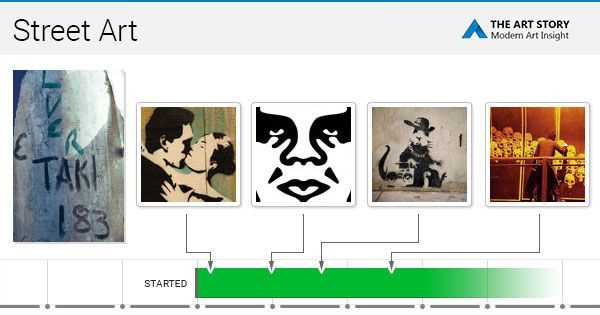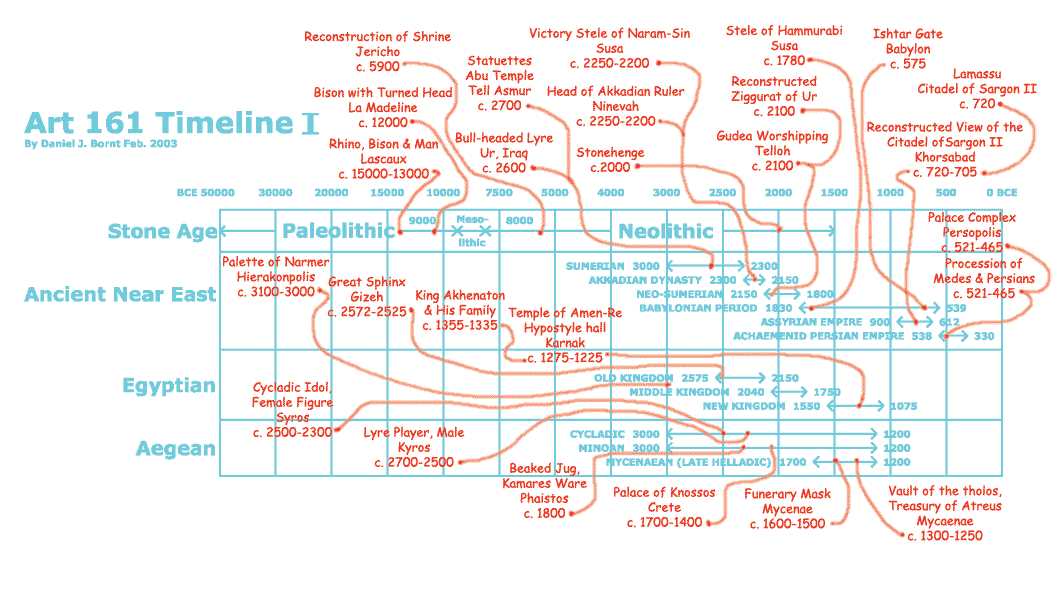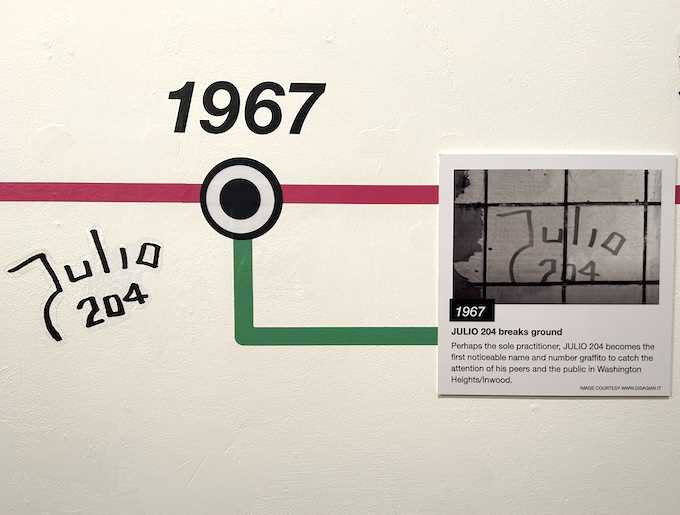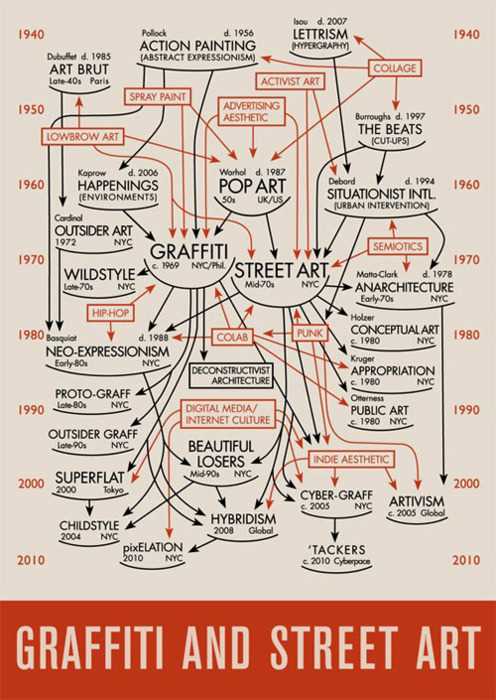
Graffiti, once considered a form of vandalism, has evolved into a legitimate art movement that has left a lasting impact on modern culture. From its humble beginnings as illicit tags on city walls to its recognition as a respected art form, graffiti has come a long way. This timeline takes a closer look at the history of graffiti, highlighting key moments and significant artists who have shaped this dynamic art form.
The origins of graffiti can be traced back to ancient civilizations, where people would carve or paint symbols on cave walls or tombs. These early forms of graffiti served as a way for individuals to communicate and leave their mark in the world. Fast forward to the 20th century, and graffiti began to emerge as a form of self-expression in urban settings.
With the rise of hip-hop culture in the 1970s, graffiti gained mainstream attention. Artists such as Taki 183 in New York City were among the first to gain recognition for their graffiti tags. This era marked the birth of the graffiti subculture, as artists began to develop unique styles and create larger, more elaborate pieces. These vibrant and colorful works of art could be found across cityscapes, spreading messages and sparking conversations.
As graffiti continued to evolve, so did the techniques and materials used by artists. The introduction of spray paint cans and new artistic approaches allowed for more intricate and visually stunning creations. Graffiti also became a platform for political and social commentary, with artists using their work to address issues such as inequality and racism.

Graffiti has a long history that can be traced back to ancient civilizations. The first known examples of graffiti can be found in ancient Egypt, where hieroglyphs were often carved or painted on walls and monuments. These early forms of graffiti were used to convey religious or political messages, and they often depicted scenes from everyday life.
In ancient Greece and Rome, graffiti was also prevalent. Citizens would often write or scratch messages on walls to express their opinions or leave their mark on public spaces. These early forms of graffiti were seen as a form of self-expression and a way to make their presence known.
During the Middle Ages, graffiti was still present in various forms. In Europe, graffiti could often be found in churches and cathedrals, where pilgrims would often carve their names or symbols as a way to document their journey. In Asia, graffiti was prevalent in temples and shrines, where visitors would leave messages or prayers.
It wasn’t until the 20th century that graffiti evolved into the modern form we are familiar with today. With the rise of urbanization and the development of spray paint, graffiti began to spread throughout cities like New York and Philadelphia. It became a way for marginalized communities to express themselves and bring attention to social and political issues.
Today, graffiti has become a recognized art form and can be seen in galleries and museums around the world. It continues to be a powerful form of expression and a way for artists to make their mark on public spaces.
The Rise of Urban Culture
The rise of urban culture played a significant role in the development of graffiti as an art form. As cities grew and evolved, so did the voices of the marginalized communities within them. Graffiti became a powerful tool for self-expression and resistance in these urban environments.
The Birth of Hip Hop

One of the key factors in the rise of urban culture was the birth of hip hop in the 1970s. Hip hop emerged as a cultural movement in the Bronx, New York, and quickly spread throughout the United States and beyond. It encompassed various art forms, including rap music, breakdancing, DJing, and graffiti.
Urban Decay and Alienation
Urban decay and alienation also contributed to the rise of urban culture. Many inner-city neighborhoods were neglected by the government and faced social and economic challenges. This led to a sense of disenfranchisement among the residents, who turned to graffiti as a way to reclaim their environment and voice their frustrations.
Moreover, graffiti became a means of communication among members of these marginalized communities. It provided a platform for individuals to share their stories and experiences, creating a sense of unity and belonging.
| Year | Event |
|---|---|
| 1967 | The term “graffiti” is first used to describe inscriptions and drawings found on the walls of Pompeii. |
| 1970s | Graffiti begins to emerge as an art form in New York City, primarily in the form of tags and stylized signatures. |
| 1980s | Graffiti becomes more widespread and gains recognition as a legitimate form of expression. |
| 2000s | Graffiti continues to evolve and adapt, with new styles and techniques constantly emerging. |
Graffiti as Street Art

Graffiti, a form of public art, has long been associated with rebelliousness and vandalism. However, in recent years, there has been a growing recognition of graffiti as a legitimate form of street art.
The Evolution of Graffiti as a Street Art Form

Originally considered a subversive act, graffiti has evolved over time to become an integral part of urban culture. Artists have transformed the act of illegal tagging into a means of self-expression and social commentary.
Street art, including graffiti, often addresses political and social issues, creating a visual dialogue between the artist and the public. It can challenge societal norms, question authority, and provoke thought.
The Rise of Graffiti Murals

One major development in graffiti as street art is the rise of large-scale murals. Artists have moved away from the traditional tags and small-scale graffiti pieces to create stunning and intricate artwork that covers entire buildings or walls.
These murals often draw inspiration from various art movements, such as pop art, surrealism, or abstract expressionism. They showcase the artistic skills of the graffiti artists and create a vibrant and visually stimulating environment in the urban landscape.
Graffiti murals have gained recognition and acceptance in many cities around the world. Local governments and businesses now commission street artists to create public murals as a way to beautify and revitalize neighborhoods.
Overall, graffiti as street art has transcended its negative reputation to become a respected and appreciated art form. It continues to push artistic boundaries and challenge the status quo, making a lasting impact on the visual landscape of cities.

I am a mural enthusiast and a fervent admirer of street art. Rather than creating murals myself, I am passionate about collecting them. My love for street art knows no bounds. I am dedicated to curating and cherishing these artworks that grace the streets. My collection stands as a testament to my profound appreciation for this form of artistic expression.
read about me



